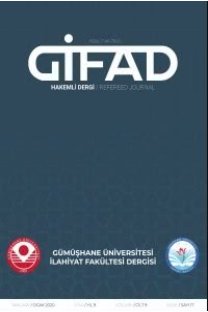Yeni İran Sineması'nda Çocuk
Yeni İran Sineması’nda çocuk temsili üzerine odaklanan çalışmada tarihsel gelişim süreci ışığında Yeni İran Sineması’nın geçirdiği evrelerin sinema üzerindeki yansımaları incelenmiştir ve çocuğun Yeni İran Sineması’nda sansüre ve baskı politikalarına karşı çok özel bir yeri olduğu anlaşılmıştır. Doküman tarama yöntemi kullanılan çalışmada belirlenen yönetmenlerin öncü filmleri de üslup, estetik ve teknik özellikler açısından incelenmiştir. Çalışmanın amacı İran Sineması’nda çocukların ulusal kimliğine sahip çıkıp çıkmadığının tespiti olarak belirlenmiş ve sıradan öykülerinde yoğun duyguları ve çarpıcı mesajları büyülü ve gerçekçi bir şiirsellikle sunan çocukların, sinemalarında gösterim imkânı bulamayan aşk, cinsellik, savaş, toplumsal sorunlar gibi birçok konunun işlenişini sağladıkları ayrıca saf ve masum bakış açılarıyla kendi ulusal kimliklerini yansıtırken yetişkinlerine örnek bir duruş sergiledikleri bulgularına erişilmiştir. Çalışmada gerek şiirsel gerek sosyal gerçekçi izdüşümleri olan Yeni İran Sineması’nın çocuk temsilinde de ulusal kimliğe sahip çıkıldığı ve çocukların İran Sineması’nın farklı ülkelerde de tanınıp büyük başarılar elde etmesinde büyük katkıları olduğu sonucuna varılmıştır.Anahtar Kelimeler: Yeni İran Sineması, Çocuk, Kimlik CHILD IN THE NEW IRANIAN CINEMAABSTRACTIn this study that mainly focuses on representation of child in the New Iranian Cinema, traces of the stages that Iranian new wave has been through have been studied in the light of historical development and it’s been understood that child has significant place against censorship and oppressive policies in The New Iranian Cinema. Document scanning method is used in this study and pioneer movies of specified directors is studied with respect to narrative style, aestetic and technical specifications. Main purpose of this study is to assess whether the national identities of children have been adopted. And it came to a conclusion that children, who are able to express intense feelings and striking posts with such enchanting and realistic poetry, ensure the functioning of elements that cannot be shown on cinema, such as love, sexuality, war, social issues. Also with their pure and innocent perspective they reflect their national identies by setting an example for adults. And as a result it has been understood that representation of children in the New Iranian Cinema covers adopting the national identity and children have great effect and contribution on introduction of Iranian cinema in different countries and its great successes.Key Words: The New Iranian Cinema, Child, Identity.
Anahtar Kelimeler:
Yeni İran Sineması, Çocuk, Kimlik
CHILD IN THE NEW IRANIAN CINEMA
In this study that mainly focuses on representation of child in the New Iranian Cinema, traces of the stages that Iranian new wave has been through have been studied in the light of historical development and it‟s been understood that child has significant place against censorship and oppressive policies in The New Iranian Cinema. Document scanning method is used in this study and pioneer movies of specified directors is studied with respect to narrative style, aestetic and technical specifications. Main purpose of this study is to assess whether the national identities of children have been adopted. And it came to a conclusion that children, who are able to express intense feelings and striking posts with such enchanting and realistic poetry, ensure the functioning of elements that cannot be shown on cinema, such as love, sexuality, war, social issues. Also with their pure and innocent perspective they reflect their national identies by setting an example for adults. And as a result it has been understood that representation of children in the New Iranian Cinema covers adopting the national identity and children have great effect and contribution on introduction of Iranian cinema in different countries and its great successes.
Keywords:
The New Iranian Cinema, Child, Identity.,
___
- AKBULUT, Hasan (2005). “Anlatı bizi Nasıl Kurar? Ararat‟ ta Anlatı, Anımsama ve Kimlik”, Kültür ve İletişim Dergisi, Sayı:8, 91–124.
- AKTAġ, Cihan (2004). Dünün Devrimcileri Bugünün Reformistleri, 1. Basım. İstanbul: Kapı Yayınları.
- AKTAġ, Cihan (2005). ġarkın ġiiri İran Sineması. 2. Basım. İstanbul: Kapı Yayınları.
- BASKIN, Çetin (2012). “Cafer Panahi Sineması Vakur ve Soğukkanlı”, Altyazı, http://www.altyazi.net/makale/cafer-panahi-sinemas%C4%B1-8-164.aspx, Erişim Tarihi: 13.06.2012.
- BATUR, Sabire (2007), Siyasal İslâm Sineması Örneğinde İran Sineması, Dokuz Eylül Üniversitesi Güzel Sanatlar Enstitüsü Yayınlanmamış Doktora Tezi, İzmir.
- BERBER, Fatma (2011). Devrim Sonrası İran‟da Sinema Endüstrisi, Marmara Üniversitesi Ortadoğu Araştırmaları Enstitüsü Yayınlanmamış Doktora Tezi, İstanbul.
- DABAġİ, Hamid (2004). İran Sineması, (Çev. Begum Kovulmaz, Barış Aladağ), İstanbul: Agora Kitaplığı.
- ISSN: 2146-3301
- Yayın Aralığı: Yılda 2 Sayı
- Başlangıç: 2011
- Yayıncı: Mustafa Cankut
Sayıdaki Diğer Makaleler
Serdengeçti Dergisi ve Siyasal İktidarla İlişkisi
Türkiye'de Özel Televizyon Kuruluşlarında Dış Kaynak Kullanımı
Medya Aracılığıyla Popüler Kültürün Aktarılmasında Toplumsal Değişkenlerin Rolü
Türk Yazılı Basınının HIV/AIDS Haberlerindeki Nefret Söylemi: Posta Gazetesi Örneği
Çağdaş Türk Kadını İmajı Yaratma Sürecinde Cumhuriyet Gazetesinin Rolü (1930-1935)
Türk Sineması'nda Arabeskin Doğuşu ve Gelişimi
Uluslararası Medya Sermayesinin Yayılmacılığı ve Türk Medyası
